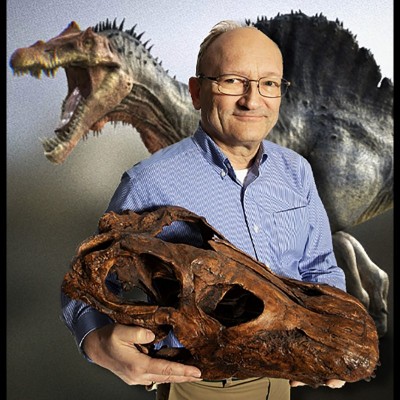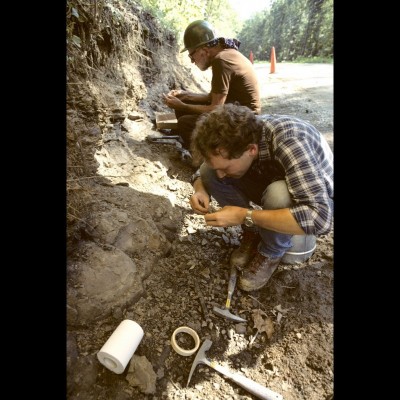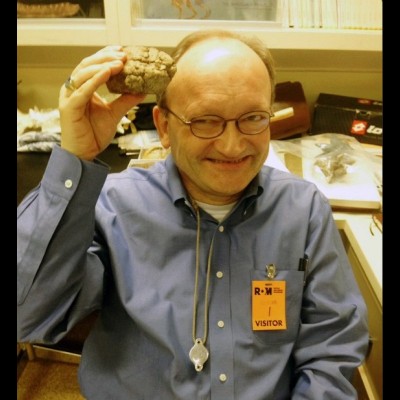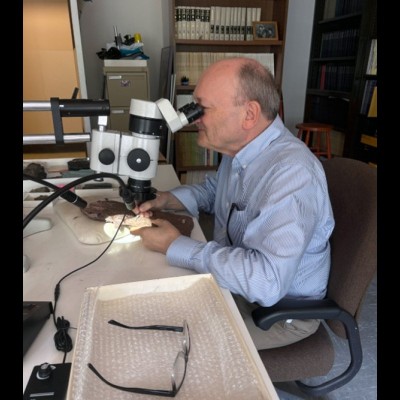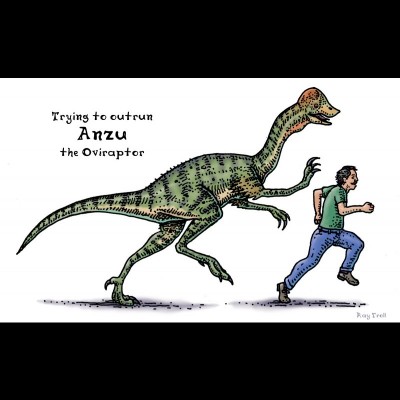11/26/2025
Ep #92 From Smok to Spinosaurus with Smithsonian Curator Hans-Dieter Sues
Ray and Dave talk with Smithsonian paleontologist Hans-Dieter Sues about the origins of reptiles, the rise of dinosaurs, and a lifetime unearthing Triassic treasures from around the world.

Ep 92 Paleo Nerds with Hans Sues
LINKS FROM THE INTRO
The discovery of a remarkably preserved early Eocene marine turtle is detailed in this Syria sea turtle study, revealing soft-tissue features that illuminate early sea turtle evolution.
The unusual armored dinosaur Spicomellus afer reshapes ankylosaur evolution by introducing a completely unique rib-armored morphology never before seen in dinosaurs.
LINKS FROM THE INTERVIEW
Explore Hans-Dieter Sues’s extensive research on Triassic and Jurassic vertebrates through his ResearchGate profile, which documents his work on reptile evolution and faunal transitions.
His comprehensive synthesis of reptile origins is presented in The Rise of Reptiles, a detailed examination of how early reptiles diversified after the Permian extinction.
The pachycephalosaur Hanssuesia honors Sues and offers insight into dome-headed dinosaur skull morphology and growth patterns.
The large carnivorous archosaur Smok wawelski shows how crocodile-line and dinosaur-line predators converged during the Late Triassic.
Hans’s first childhood fossil book was Prehistoric Animals, whose Augusta–Burian illustrations shaped early public understanding of extinct life.
The Solnhofen fossil beds produced Archaeopteryx, the iconic transitional fossil linking non-avian dinosaurs to early birds.
The living relic tuatara represents the last surviving rhynchocephalian, preserving ancient diapsid traits lost in modern lizards.
Some vertebrates retain a light-sensitive parietal eye, reflecting deep evolutionary roots in circadian and seasonal regulation.
The Early Permian synapsid Ctenospondylus exhibits elongated spinal spines forming a sail that informs studies of thermoregulation and display behavior.
The Triassic diapsid Longisquama bore distinctive elongated dorsal appendages that continue to challenge interpretations of early reptile integument.
The newly described archosauromorph Mirasaura features a tall dorsal crest that adds key anatomical data to early reptile evolutionary pathways.
Drepanosaurs, as shown in this video, were arboreal Triassic reptiles with unusual grasping limbs and prehensile tails unlike any modern analog.
The unusual hand morphology of drepanosaurs even evokes the Vulcan salute, highlighting their extreme digital divergence.
The story of Mirasaura’s discovery traces back to Louis Grauvogel’s 1930s fossil collection in the Vosges Mountains.
The semi-aquatic Triassic reptile Tanystropheus possessed an extraordinarily long neck that raises biomechanical and ecological questions.
This Mirasaura animation visualizes how its distinctive crest and posture might have functioned in life.
Mirasaura’s significance is underscored by its appearance on the cover of Nature, highlighting its unique anatomical features among early reptiles.
The Permian Red Beds of Texas and Oklahoma preserve a rich record of pre-mammalian synapsids and early reptile ecosystems.
The tusked therapsids known as dicynodonts illustrate herbivore diversity and survival strategies before and after the Permian extinction.
The saber-toothed predators called gorgonopsians were apex carnivores of the late Permian, displaying advanced synapsid jaw mechanics.
The widespread Triassic survivor Lystrosaurus exemplifies ecological dominance following Earth’s largest mass extinction.
Archosaurs diverged in the Triassic into the crocodilian line and the dinosaur–avian line, marking a major split in reptile evolution.
The debated Carnian Pluvial Episode represents a burst of Late Triassic humidity and climate instability that may have influenced dinosaur diversification.
Zion’s Moenave Formation records arid conditions at the Triassic–Jurassic boundary, preserving critical vertebrate tracksites.
The Kristianstad Basin in Sweden contains Late Cretaceous fossils, including occasional dinosaur remains washed into marine environments.
The dromaeosaurid Saurornitholestes, named by Hans, represents a small, agile predator known from fragmentary remains across western North America.
Alexander von Humboldt revolutionized natural science by integrating geology, ecology, and climate into a unified framework for understanding Earth systems.
Mathematician Carl Friedrich Gauss collaborated with Humboldt and advanced the physical sciences through innovations in geodesy and magnetism.
The Peale family blended art and natural science to create some of America’s earliest museum displays and scientific illustrations.
Ernst Stromer, who discovered Spinosaurus, remains essential to North African paleontology despite the wartime loss of his original fossils.
The unusual crocodyliform Anatosuchus had a broad duck-like snout suggesting specialized feeding strategies within Cretaceous ecosystems.
The dome-headed dinosaur Stygimoloch, named by Hans, contributes to debates on pachycephalosaur growth and ontogeny.
The horned, dragonlike Dracorex hogwartsia highlights the extreme cranial ornamentation seen in some pachycephalosaurs, possibly representing a juvenile stage.
New analysis supports that Torosaurus is distinct from Triceratops, preserving both taxa as valid and reshaping ceratopsian growth models.
Ray Troll is the artist behind the striking ratfish drawing featured in this Smithsonian article about the chimaera with teeth on its tenaculum, shown here: the deep-sea ratfish with forehead dentition.
MUSIC
Summertime by the Amish Robots
Hump Day by Ray Troll
Flicker of Light by Whiskey Class

